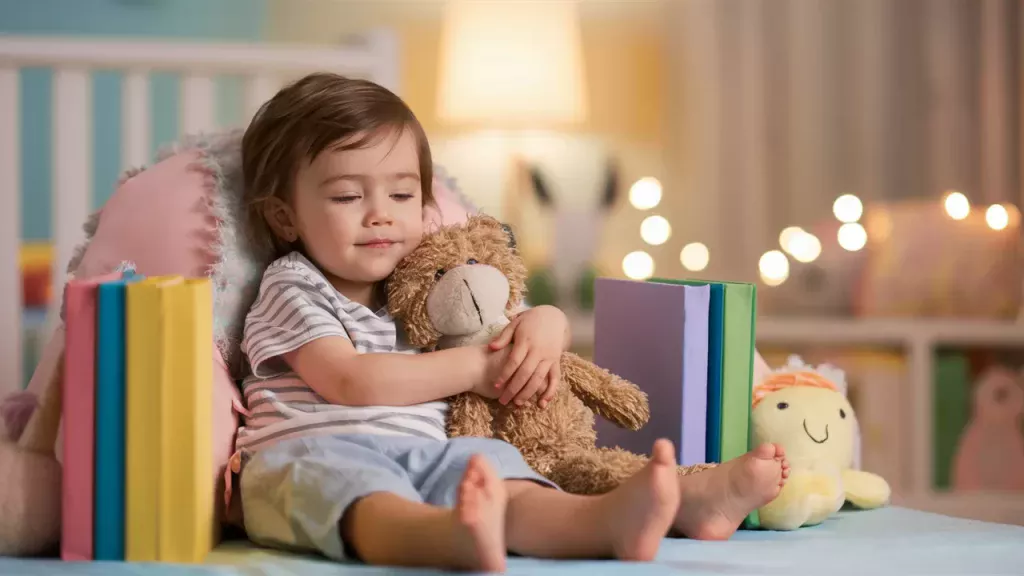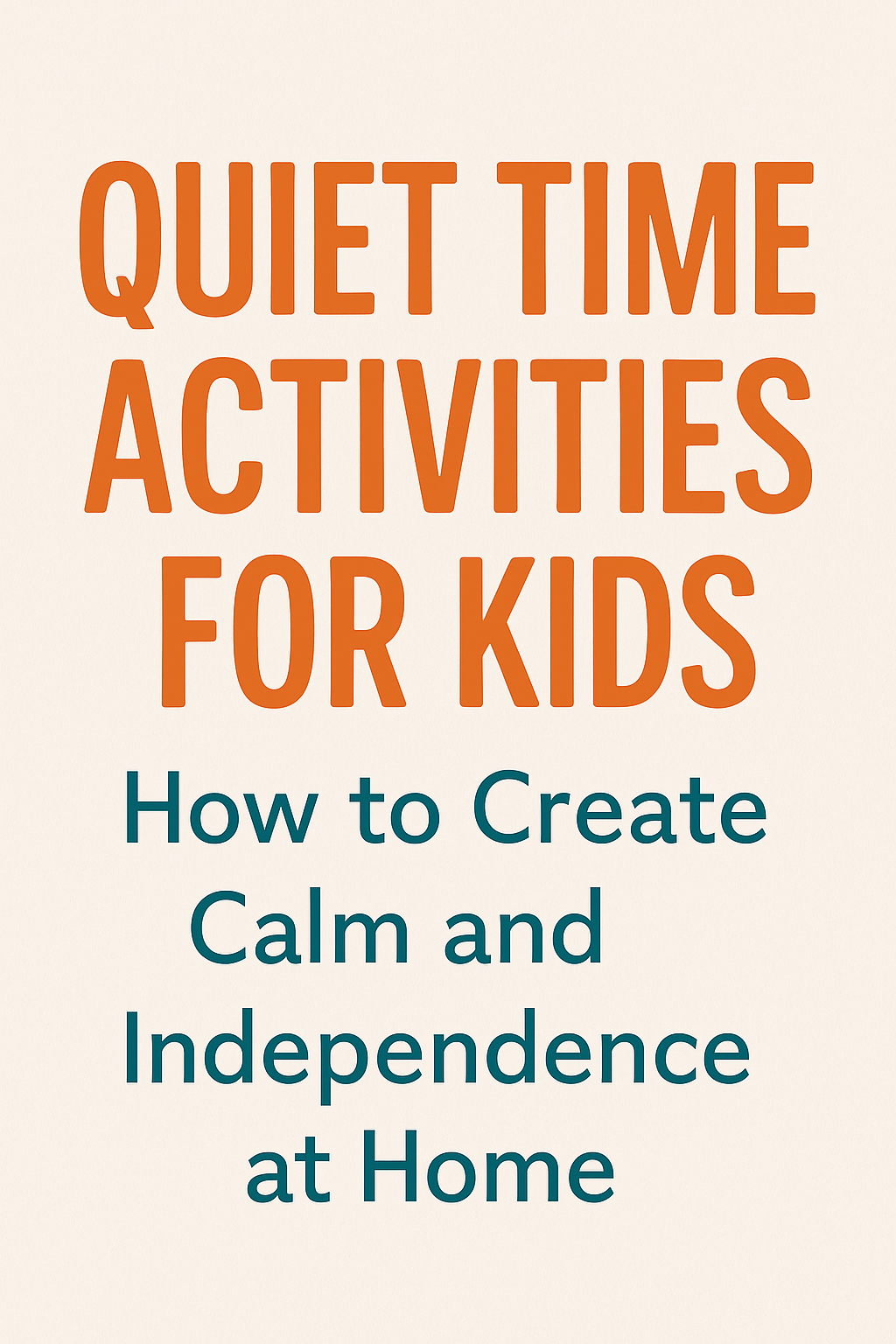Quiet Time Activities for Kids: Easy Ideas to Build Calm and Independence
When kids drop their naps, many parents worry: “How am I supposed to get anything done now?”
I get it — I had the exact same thought when my daughter stopped napping at 2 years old!
That’s when I discovered the magic of quiet time activities for kids — calming routines that give little ones a break from the chaos while offering parents a much-needed pause.
In this post, I’ll walk you through exactly how to set up quiet time, the best activities by age, common challenges (and how to fix them!), and my favorite tools to make quiet time successful for years to come.
Heads up: This post may include affiliate links. As an Amazon Associate, I earn from qualifying purchases—at no extra cost to you. Full privacy policy and disclosure here.
What is Quiet Time for Kids?
Quiet time is a scheduled part of the day where kids play, read, or rest independently without screens or parent-led activities.
It’s a wonderful transition when naps end but kids still need downtime to process their emotions, boost creativity, and recharge their energy.
According to the American Academy of Pediatrics, structured downtime is critical for emotional regulation and healthy brain development.
Why Quiet Time Matters
Quiet time isn’t just a “break” for parents — it has real, lasting benefits for kids too:
- Fosters independence and problem-solving skills
- Strengthens creativity through imaginative play
- Improves emotional regulation and resilience
- Provides necessary sensory breaks
- Promotes better sleep and calmer evenings
Research by NAEYC shows that independent play is one of the key predictors of self-confidence in early childhood.
When to Start Quiet Time
You can start introducing quiet time activities for kids as early as 18 months.
Even 10 minutes of independent play builds stamina over time.
If your child has stopped napping but gets cranky in the afternoon, it’s the perfect time to gently introduce quiet time!

When to Start Quiet Time
You can start introducing quiet time activities for kids as early as 18 months.
Even 10 minutes of independent play builds stamina over time.
If your child has stopped napping but gets cranky in the afternoon, it’s the perfect time to gently introduce quiet time!
How to Set Up a Successful Quiet Time Routine
Here’s a simple starter plan to help you create an amazing quiet time habit:
1. Set Clear Expectations
Explain that quiet time is part of the daily routine — just like meals or brushing teeth. Frame it positively:
“Everyone needs a little time to rest their bodies and brains.”
2. Create a Special Quiet Time Space
Set up a cozy spot like a corner with soft pillows, a bean bag, or even a pop-up play tent!
A cozy space signals to your child that quiet time is a special moment of the day.
Tip: A soft kids’ bean bag chair makes a perfect quiet corner addition!
3. Choose the Right Activities
Offer calming, screen-free activities. Rotate choices weekly to keep it exciting!
Keep the options simple — too many choices can overwhelm young kids.
(We’ll dive into the best ideas by age below!)
4. Start Small and Build Up
Begin with just 10–15 minutes and gradually extend the time.
Use a visual timer so they can “see” how much time is left.
We love this visual countdown timer for helping young kids stay on track!
Best Quiet Time Activities for Kids by Age
Toddlers (18–36 months)
- Board books or fabric books
- Simple puzzles
- Large building blocks
- Pretend play (stuffed animals, dolls)
- Coloring with toddler-safe chunky crayons
Pro Tip: Use a child-safe mirror so toddlers can explore independently!
Preschoolers (3–5 years)
- Audiobooks with headphones
- Sticker books
- Easy matching games
- Building with Magna-Tiles
- Calm, themed coloring books like this one
Preschoolers often love small-world play too — like creating a tiny farm or zoo scene.
Early Elementary (6–8 years)
- Quiet STEM kits (snap circuits, marble runs)
- Journaling or “quiet time” journals
- Read-aloud chapter books
- Art projects like origami or watercolor sets
Tip: Offer a puzzle mat to keep longer projects contained over multiple quiet time sessions.
How to Encourage Independent Play During Quiet Time
If your child is resistant to solo play at first, don’t worry — that’s completely normal!
Here are a few gentle strategies:
- Model first. Spend a few minutes playing quietly beside them at the beginning.
- Offer two choices. “Would you like to build with blocks or color quietly?”
- Use a “special bin” with toys and books ONLY for quiet time.
- Celebrate success. Praise small wins: “I love how you played quietly with your animals today!”
For more strategies to encourage self-driven play, see my tips on raising confident kids.

Real-Life Quiet Time Schedule Example
Here’s what a simple daily rhythm could look like:
| Time | Activity |
|---|---|
| 7:00 AM | Breakfast and Morning Play |
| 9:00 AM | Outdoor Adventure |
| 11:30 AM | Lunch and Books |
| 12:30 PM | Quiet Time Activities ✨ |
| 1:30 PM | Craft or Free Play |
| 3:00 PM | Snack and Outdoor Play |
Having a predictable routine helps kids feel safe and reduces resistance.
Quiet Time FAQs: Quick Answers for Parents
How long should quiet time last for kids?
Start with 15 minutes for toddlers and build up to 45–60 minutes for preschoolers and elementary kids.
What if my child refuses quiet time?
Stay consistent, keep the environment calming, and make it a non-negotiable part of the day — like brushing teeth.
Can quiet time involve screens?
Preferably, no. Quiet time is meant for imagination, relaxation, and unplugged creativity.
What are the best toys for quiet time?
Open-ended toys like Magna-Tiles, puzzles, stuffed animals, coloring supplies, and simple STEM kits work wonders.
Does quiet time help improve sleep?
Absolutely! A mid-day sensory break often leads to better naps (for younger kids) and calmer bedtimes (for older ones).
Helpful Tips for Making Quiet Time Stick
- Use a timer so it’s clear when quiet time starts and ends
- Keep special toys reserved only for quiet time
- Allow quiet snack time before starting (full bellies = calmer kids)
- Stay patient — it can take 2–4 weeks to fully establish the habit
Remember, the goal isn’t perfection — it’s creating a nurturing rhythm that grows independence and calm over time.
For extra routines that help with busy days, check out my after-school routine tips too!
Final Thoughts: Quiet Time is a Gift for the Whole Family
Creating a consistent quiet time routine has been one of the best parenting moves I’ve made.
It’s not about “getting kids to be quiet” — it’s about giving them the tools to explore, imagine, and self-regulate independently.
With the right quiet time activities for kids, a cozy space, and a little patience, you’ll be amazed how much joy, creativity, and peace you can build into your family’s day.
✨ Tap to explore 20+ quiet time activities for kids that build independence and bring calm to your home!
📌 Save this post to your parenting board for easy ideas anytime!

I’d love to hear from you! What are your favorite quiet time activities for your kids? Share your best tips, ideas, or questions in the comments — let’s help each other create calmer, happier homes!
